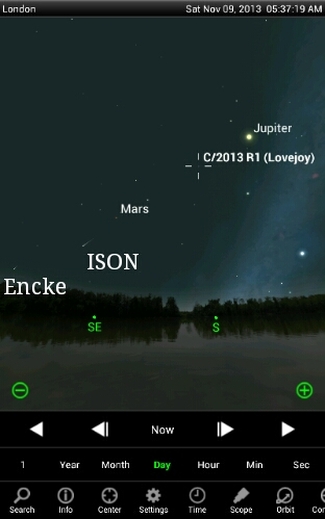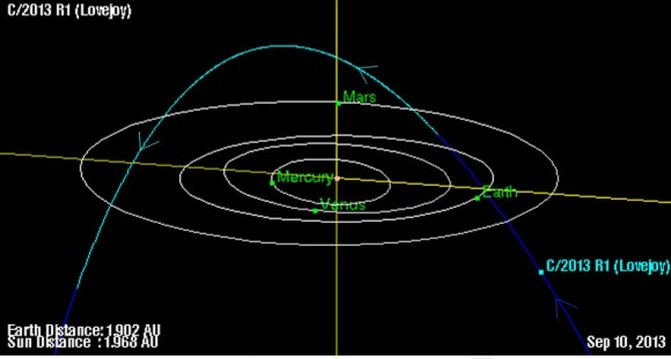
The discovery of C/2013 R1 Lovejoy was announced on Sept. 9 after two nights of photographic observations by Lovejoy with an 8-inch (20 cm) Schmidt-Cassegrain reflector. When nabbed, the comet was a faint midge of about 14.5 magnitude crossing the border between Orion and Monoceros. Subsequent observations by other amateur astronomers peg it a bit brighter at 14.0 with a small, condensed coma.
Mid to late November is also the time when Comet ISON, the current focus of much professional and amateur observation, will be at its brightest in the morning sky at around magnitude 2-3. Get ready for some busy nights at the telescope!
C/2013 R1 will whip by the sun on Christmas Day at a distance of 81 million miles (130.3 million km) and then return back to the deeps from whence it came. The charts here give you a general idea of its location and path over the next couple months. As the comet crosses into small-scope territory in early November, I’ll provide maps for you to find it. And as Stuart Atkinson noted on his website, Cumbrian Sky a great lineup should be in the northern hemisphere skies on November 9, 2013.
From the left, Comet Encke will be magnitude 6, ISON should be at about magnitude 6 or 7; then Mars, followed by the new Comet Lovejoy, which will be still very faint at around magnitude 9, topped off by a bright Jupiter. The comets will not likely be of naked eye visibility, but this should be a great chance for astrophotographer to capture this lineup! –Universe Today

 RSS Feed
RSS Feed